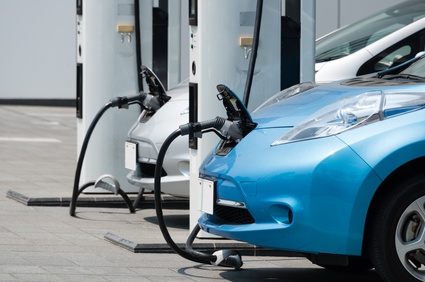Quebec’s electric car subsidies are wasteful and relatively ineffective

No one would dare suggest that we forgo the use of power shovels on road construction sites in Quebec in order to reduce greenhouse gas (GHG) emissions. The idea is ridiculous because roadwork would last an eternity, costs would skyrocket and, especially, the impact on GHG emissions would be negligible.
Yet on Oct. 9, Premier Philippe Couillard made an announcement that amounted to something similar. He wants to increase the number of electric vehicles in Quebec from 7,500 now to 100,000 in five years by maintaining the existing $8,000 subsidy for each car purchased since 2012. The declared objective is to reduce the GHG emissions of Quebec’s transportation sector. But the proposed means will have practically no effect on Quebec emissions.
We imagine that because electric or hybrid vehicles consume no gasoline, or very little, they are much more ecological. And it is true that in their use, these vehicles do reduce GHG emissions. A typical gas-powered passenger vehicle emits 3.15 tonnes of GHG per year, or 31.5 tonnes over the life of a typical vehicle.
However, the manufacture of electric vehicles and their batteries produces 7.2 more tonnes of GHG emissions per car than the manufacture of gas-powered vehicles. Over a useful lifespan of 10 years, the use of an electric vehicle therefore reduces GHG emissions by only around 24.3 tonnes.
Can we then say that the $8,000 subsidy toward the purchase of an electric vehicle reduces Quebec emissions by this amount? Not really. The following calculations illustrate what the government is forgetting to take into account:
The first problem with subsidies is that they have unintended beneficiaries. A recent study of the Canadian market suggests that only 26 per cent of hybrid vehicle purchases were attributable to a subsidy program. This makes sense given that electric vehicles are disproportionately bought by affluent households. In other words, 74 per cent of buyers who benefitted from the subsidies would have bought their cars anyway. If we assume this rate holds true for Quebec, this would mean that avoiding 24.3 tonnes of GHGs in this way would really cost the government $30,769 — not even counting the implicit subsidy in cheap electricity from Hydro-Québec.
Second, if Quebec’s fleet of vehicles emits fewer tonnes of GHGs, this means that manufacturers can sell more high-emission vehicles in other provinces. This is because manufacturers are subject to federal emissions standards based upon an average of all vehicles sold Canada-wide. Professor Lawrence Goulder of Stanford University recently concluded, about the same kind of regulation in the United States, that three quarters of the benefit of state-specific higher-than-federal standards is lost because of an increase in emissions in other states. So the $30,769 wouldn’t actually buy 24.3 tonnes of reductions, but closer to 6.1 tonnes.
In sum, Quebec’s plan could cost something like $5,044 per tonne of GHGs avoided. At the moment, on Quebec’s carbon market, the price of avoiding one tonne of GHGs is around $16. Should we be happy about overpaying by a factor of 315?
The Quebec government is proposing to spend hundreds of millions of dollars subsidizing electric vehicles in order to eliminate about 150,000 of Quebec’s 78 million tonnes of emissions — a 0.2 per cent reduction. We could achieve the same result at a much lower cost.
Fuel taxes in Quebec are among the highest in the country, and as of this year include the cost of the carbon market, paid into the Green Fund which finances the purchase of electric vehicles. If the government doesn’t know how to use the money from this fund efficiently, it should perhaps consider giving taxpayers a bit of relief, for example by reducing income taxes.
Youri Chassin est économiste et directeur de la recherche à l'Institut économique de Montréal. Ian Irvine est chercheur associé à l'IEDM. Ils signent ce texte à titre personnel.

